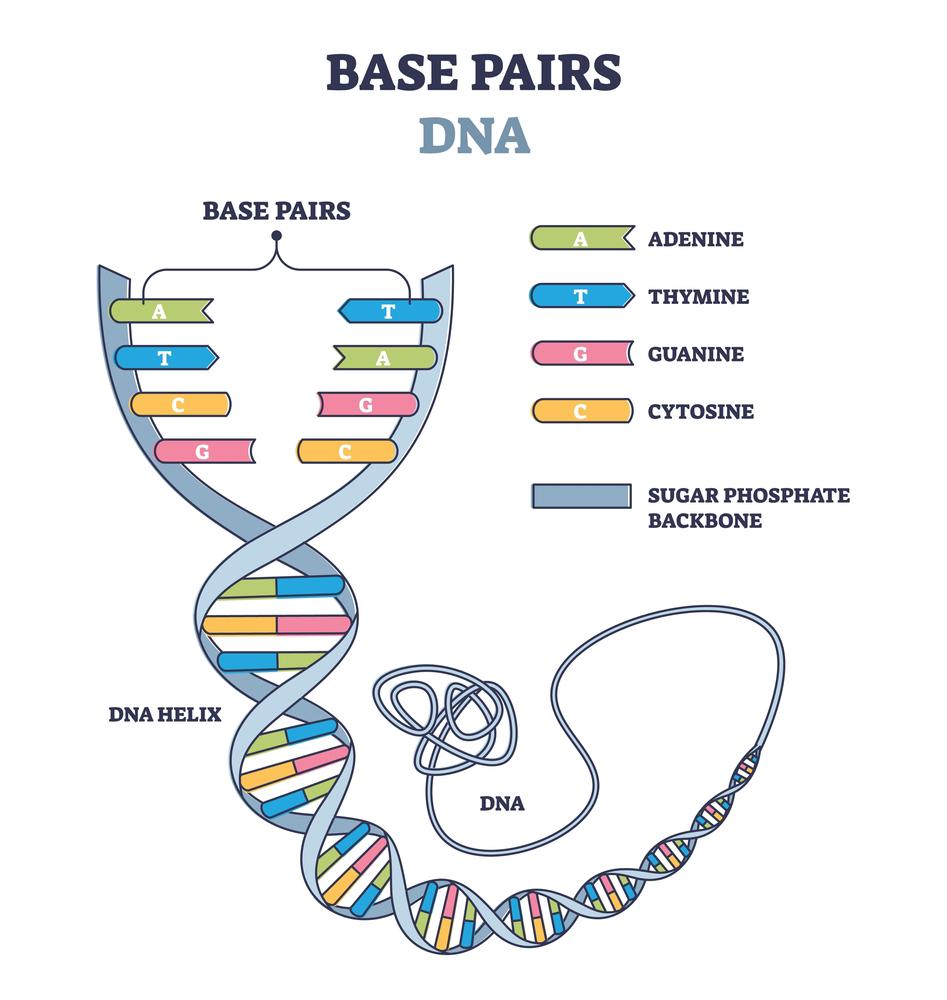Imagine that you need to separate, define and understand, in the correct sequence, an alphabet soup of billions of occurrences of the letters A, T, G and C. Genomics!
This field of study maps and studies the genomes of humans, animals, plants, and any other things that have them DNA.
It’s time to remember your high school genetics lessons, and understand why this field of study is so important, as well as how it can affect your life in the future.
What are genes? Why is genomics the future? Is genomics the same as genetics? See what is known so far.
It is estimated that the human body contains 3 billion base pairs of DNASource: Clash
What are genes and what is their purpose?
Before explaining what genomics is, let’s start by explaining what genes and DNA are.
Deoxyribonucleic acid, better known as DNA, is the recipe for life. It contains encrypted information that is passed down from generation to generation.
It consists of two strands, forming a helix, joined by the interaction of bases called adenine (A), thymine (T), guanine (G) and cytosine (C).

There is a global sequence of interaction between these nitrogenous bases, which in specific chains form genes. make up the gene pool genome.
The function of genes is to transmit and express hereditary characteristics.
In your parents’ genetic mix, you may have inherited your father’s brown eyes and your mother’s blond hair. Every cell in your body has a little recipe.
Sometimes this recipe comes with some problems, such as shortage, excess or exchange of ingredients. This can lead to syndromes, diseases, or even a greater susceptibility to cancer.

What is genomics?
Genomics is a relatively new field of study. The first complete sequencing was done in 1980, with the study of phage viruses.
In a simplified way, the field of study of biology is one that plans, organizes, and seeks to understand the function of all genes in the human body.
It also looks at the ways in which these genes interact with each other and with the environment.
The first attempt to sequence the human genome took 10 years to complete, and was completed in 2003. Currently, it is possible to carry out mapping in 24 hours.
But genomics is not limited to humans. There are studies on many organisms, including, in Brazil, there is research to sequence the jaguar genome, which aims to preserve the animal.

Genomics versus genetics
But you might be wondering if this isn’t all the same as genetics. The answer is no.
Although both fields study genes, heredity and the functioning of organisms, genetics focuses on the individual study of genes. On the other hand, genomics studies the complete genetic pool.

What is the significance anyway?
Genomics is essential to understanding how our bodies function and interact with the environment in which we live.
By understanding this complex world of billions of messages, we can achieve many advances in the field of health, environmental and animal protection, in addition to being able to develop better methods of prevention and intervention in these areas.
By mapping many genomes, we can compare data and extract essential information to develop more aggressive therapies, when we think about the health/disease process.
It is known, for example, that each human being has between 20,000 and 25,000 genes, and they share 99.9% of the genetic code.
But a variance of 0.1% corresponds to more than 3 million differences between one human being and another.

Knowing what sets us apart is the key to developing more effective individualized therapies, and to increasing diagnostics of treatments for diseases such as cancer.
In the field of environmental and animal conservation, genomics can help develop better management techniques for animal and plant conservation.
Undoubtedly, genomics paves the way for accurate diagnosis, more effective prevention and treatment, and smarter ways to maintain practices.
However, the researchers estimate that the first treatments and approaches will take between 10 and 15 years to develop.

“Hardcore beer fanatic. Falls down a lot. Professional coffee fan. Music ninja.”






More Stories
The law allows children and adolescents to visit parents in the hospital.
Scientists pave the way for the emergence of a new element in the periodic table | World and Science
Can dengue cause hair loss? Expert explains how the disease affects hair